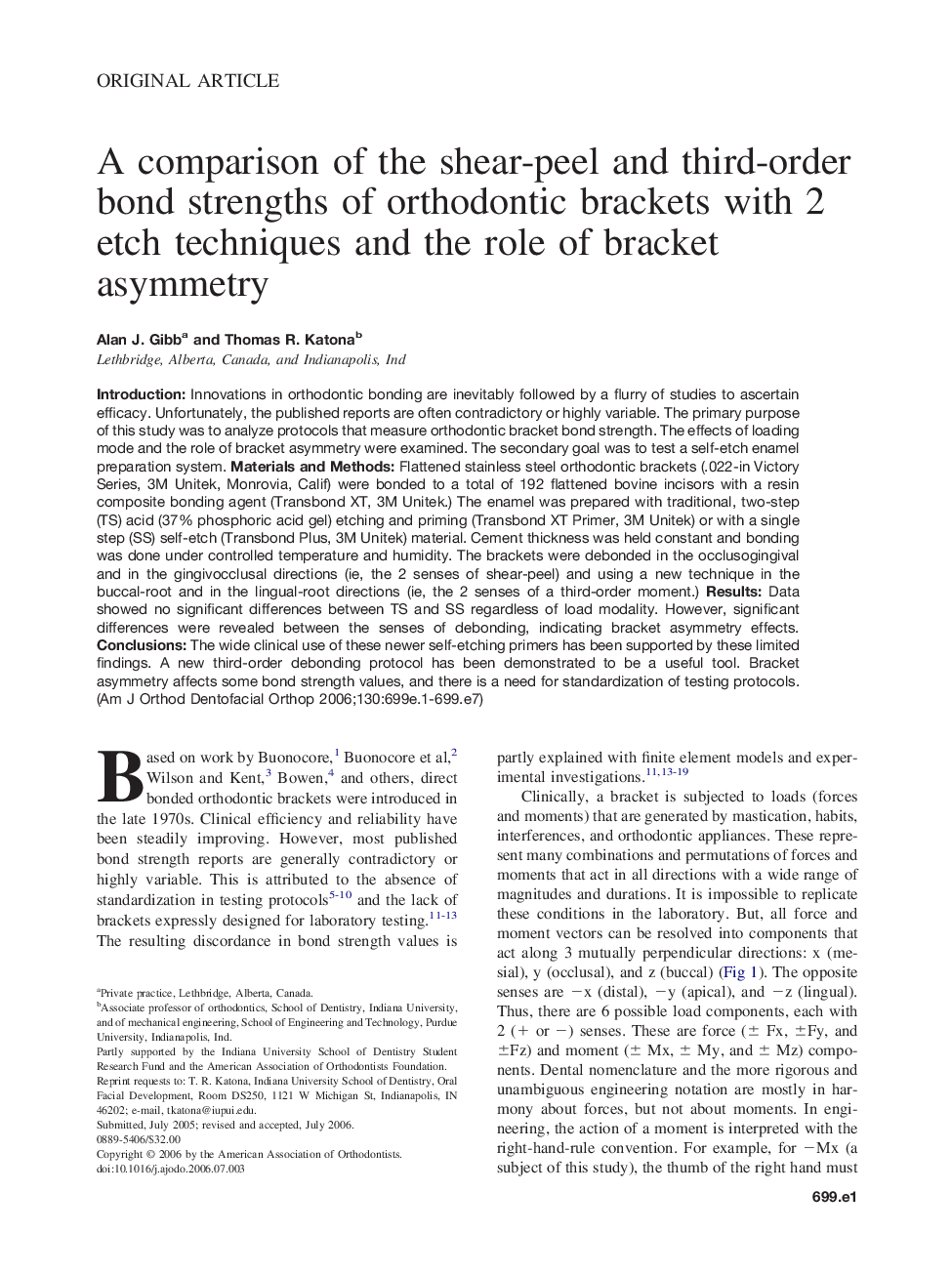| Article ID | Journal | Published Year | Pages | File Type |
|---|---|---|---|---|
| 3119705 | American Journal of Orthodontics and Dentofacial Orthopedics | 2006 | 7 Pages |
Abstract
Introduction: Innovations in orthodontic bonding are inevitably followed by a flurry of studies to ascertain efficacy. Unfortunately, the published reports are often contradictory or highly variable. The primary purpose of this study was to analyze protocols that measure orthodontic bracket bond strength. The effects of loading mode and the role of bracket asymmetry were examined. The secondary goal was to test a self-etch enamel preparation system. Materials and Methods: Flattened stainless steel orthodontic brackets (.022-in Victory Series, 3M Unitek, Monrovia, Calif) were bonded to a total of 192 flattened bovine incisors with a resin composite bonding agent (Transbond XT, 3M Unitek.) The enamel was prepared with traditional, two-step (TS) acid (37% phosphoric acid gel) etching and priming (Transbond XT Primer, 3M Unitek) or with a single step (SS) self-etch (Transbond Plus, 3M Unitek) material. Cement thickness was held constant and bonding was done under controlled temperature and humidity. The brackets were debonded in the occlusogingival and in the gingivocclusal directions (ie, the 2 senses of shear-peel) and using a new technique in the buccal-root and in the lingual-root directions (ie, the 2 senses of a third-order moment.) Results: Data showed no significant differences between TS and SS regardless of load modality. However, significant differences were revealed between the senses of debonding, indicating bracket asymmetry effects. Conclusions: The wide clinical use of these newer self-etching primers has been supported by these limited findings. A new third-order debonding protocol has been demonstrated to be a useful tool. Bracket asymmetry affects some bond strength values, and there is a need for standardization of testing protocols.
Related Topics
Health Sciences
Medicine and Dentistry
Dentistry, Oral Surgery and Medicine
Authors
Alan J. Gibb, Thomas R. Katona,
